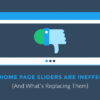
The internet is not regulated, you even go so far as to say that it’s on the wild side. The reality is – your website is connected to it. It’s a place where not everything you come across is secure including your website. When websites are not secure, they can send and receive data that is unencrypted. This data can be stolen, monitored and altered. Website security and making sure your website is secure is becoming increasingly important.
Why you need website security
Whether your website is personal or business related, it’s essential to secure it for the following reasons:
- To protect it against the uploading of viruses (malware)
- To stop the sending of phishing emails via your website
- To let your website visitors know that your site is safe
- To improve your search engine rankings
- To prevent your business from getting hacked and losing your data
What makes your website vulnerable to security issues?
Poorly written code, WordPress plugins that haven’t been updated and not taking security measures can all leave your website in a vulnerable position. The more complex the code is on your site, the more opportunity there is for hackers to take advantage of it by uploading malware. This malware could take your website down entirely, or it could force your site to behave in a way that could mean a loss of reputation for your business.
If you retain sensitive information such as customer information on your databases, then protecting it should be one of your primary concerns.
The more interaction you enable with visitors to your website, the more opportunity to abuse your generous nature. Hackers can find holes where they can gain entry and cause mayhem.
What Happens If Your Website Is Not Secure?
If your website is not secured, then you are leaving the door open for hackers and criminals to help themselves. Using the latest hacking tools, they typically exploit your website by using the following techniques:
- MITM (Man in the Middle) Attack – capturing the details that pass from a person’s web browser and your site.
- Uploading malware – these type of attacks can make your website crash. Viruses are injected using vulnerabilities in the code.
Visiting an infected website can be detrimental to your users. The code could infect their browser, leaking all their sensitive information such as credit card details.
Most hackers don’t find a new way to break into a website; they are copycats. They may have read about a new method and then want to discover if they can replicate it on a site. Once they have broken in, they may leave malware, steal something or take the site down. It’s very few hackers who can devise a new method of hacking.
Here are some malware facts from Norton. Some hackers are so good at their ‘game’ that they end up on the FBI’s Most Wanted List. Most malware comes from third-party apps – i.e. the software that is made by somebody else other than the distributor and user. With more internet usage occurring, such as the Internet of Things, attacks are on the rise. Most attacks are targeted at the United States of America, and the US government is spending $15 billion on web security.

How to secure my website?
If you’ve been scratching your head on how to secure your website, then there are two primary methods. One is to use HTTPS which is a more secure domain type. The other is to use a Website Security Seal and apply malware detection monitoring.
Let’s explore these two methods to learn more about what a difference they can make and how:
Secure HTTPS (SSL Certificate)
Although this is considered the most basic way of giving your site protection, it comes with extra benefits. You’ll need to use an SSL certificate which will be issued by your web host company. Before these sophisticated times, most websites would be hosted on HTTP. The challenge that this gives these days is that HTTP is not secure. Hackers can monitor any data passed between a browser and your website, including sensitive data. Credit card details, addresses or login credentials including passwords can all be intercepted and captured.
To switch to HTTPS, you’ll need to secure an SSL certificate. They are reasonable in cost and easy to install.
HTTPS delivers an encrypted and secure connection between a browser and your website. This makes it impossible to intercept any data passing between them. Further benefits come from the fact that Google has introduced HTTPS to be a ranking factor in their search engine algorithm. This means that Google likes websites to use HTTPS and will reward them in the form of favourable search rankings.
Website Security Seal
This security feature keeps an eye on your website for viruses and malware that hackers may upload. In effect, it’s like having an anti-virus program running on your web site. Considering that most people wouldn’t dream of accessing the internet without anti-virus protection on their laptop, it’s vital that you give your website the same protection.
If the security seal detects malware, then it will notify you so that you can remove it as soon as possible. It will send you emails automatically for you to take action.
If you have any questions or need help in protecting your website, get in touch with us today.
How much does website protection cost?
Website protection is relatively cheap. You can purchase an SSL Certificate for as little as £60 a year from your host. For the security seal system, it would cost around £70 a year, and it will scan your site daily.
If you run a complicated site that may appeal to hackers with a lot of entry points or vulnerabilities, it’s recommended that you use a web scanning solution to identify them. It’s more cost effective to repair risks than to build walls around them. Utilising a network or web site scanner would be the most efficient way to secure your site.
We can help you to use the most appropriate and cost-effective solution. Call us today on 01252 759320 for a no obligation chat about your web security challenges.









